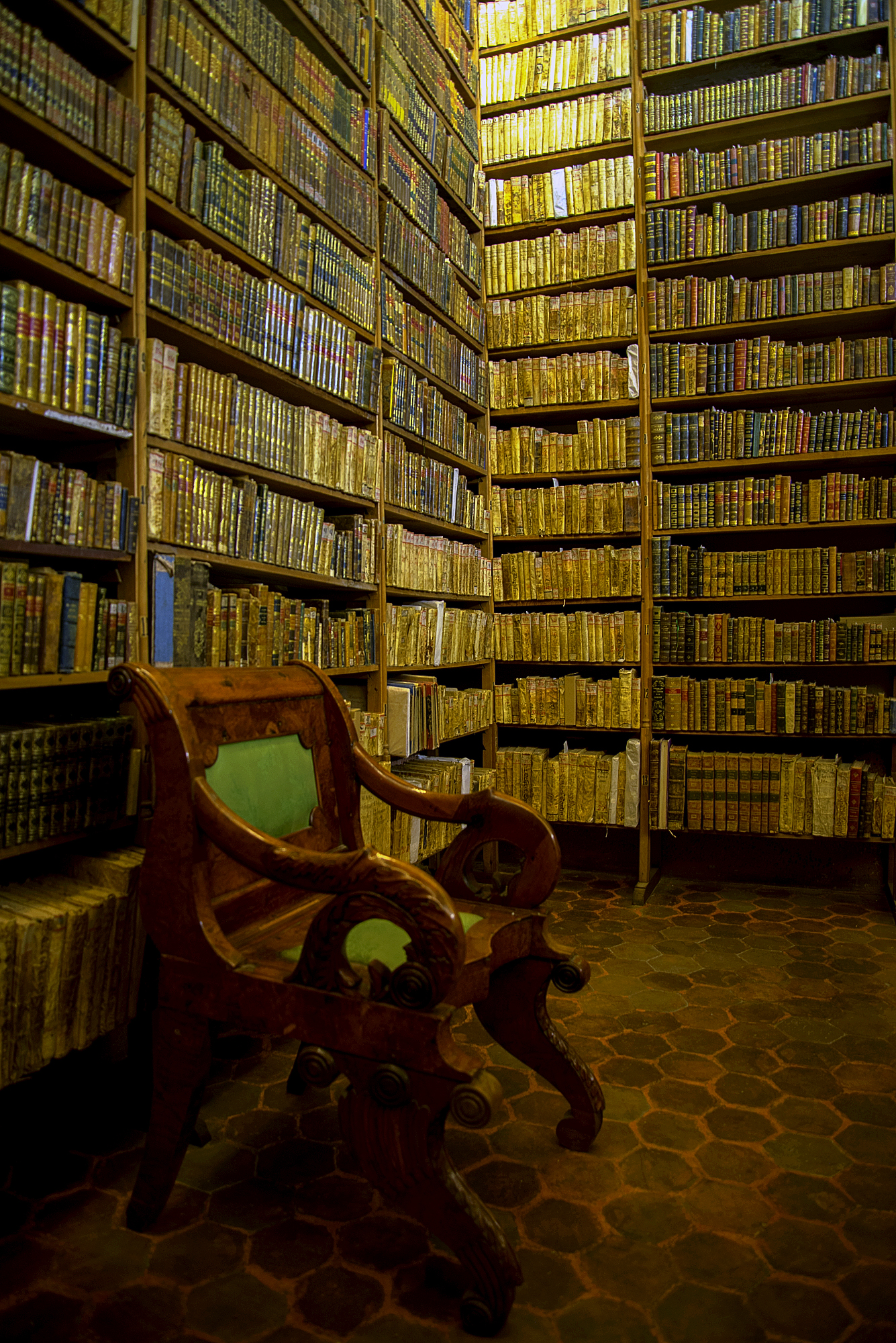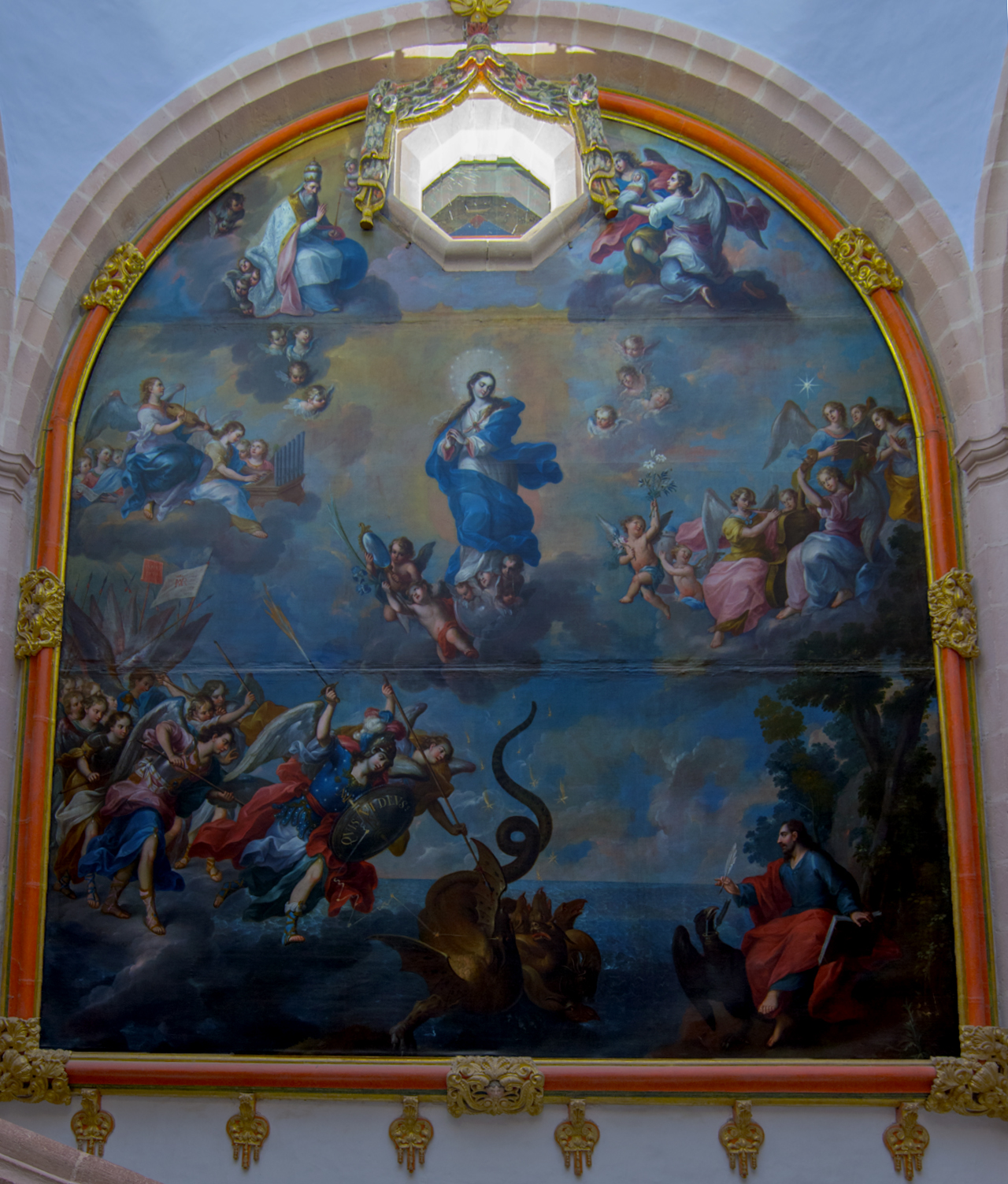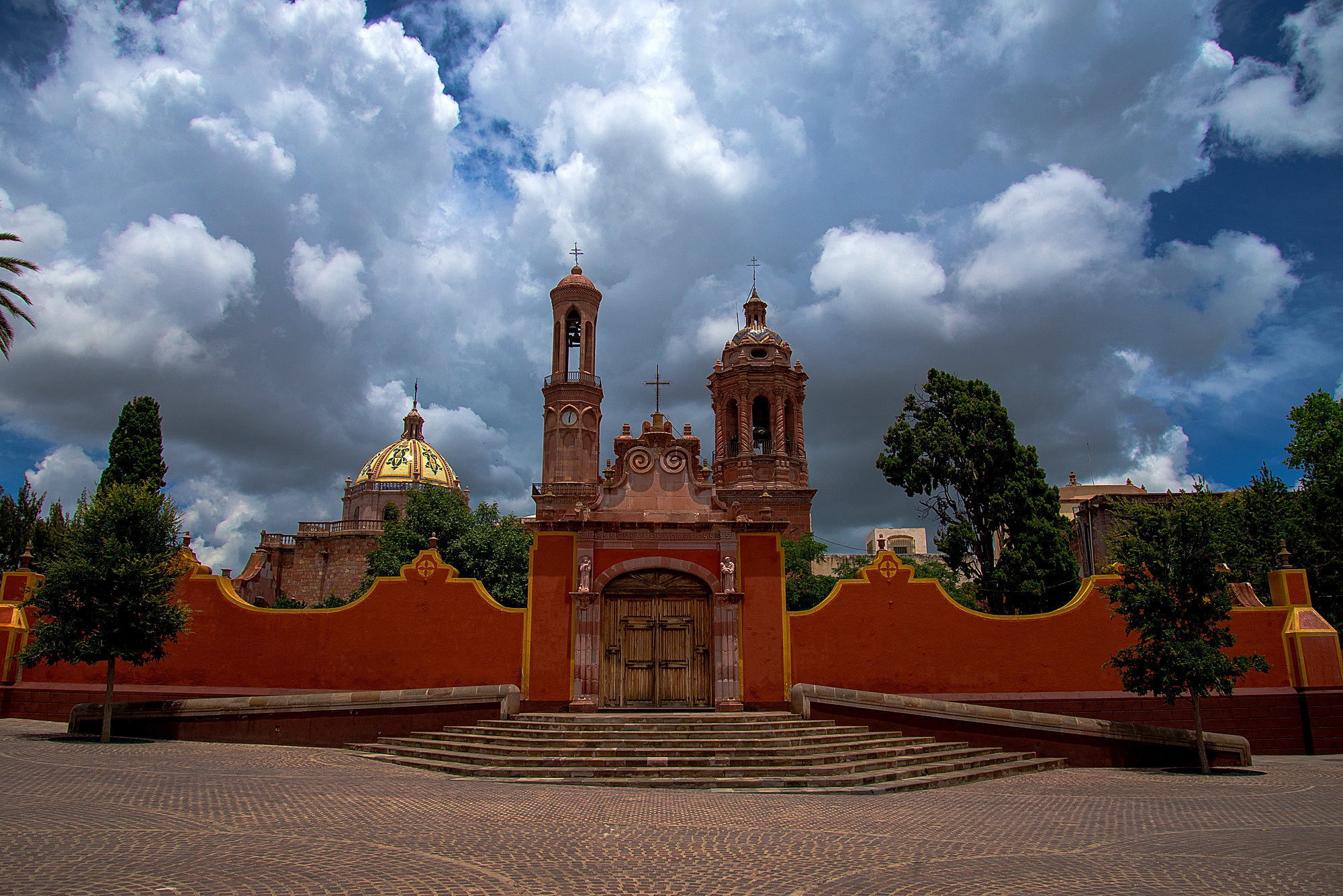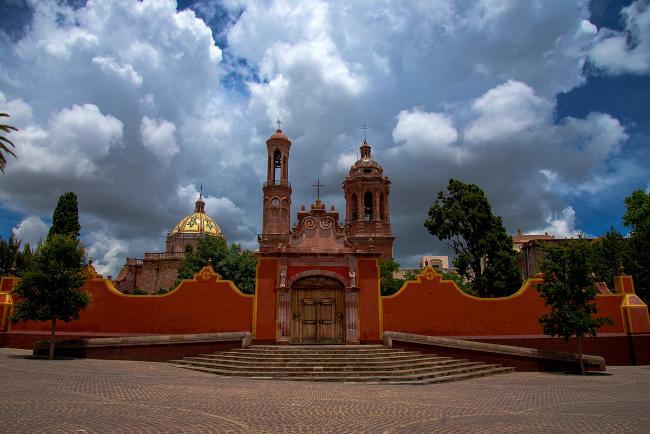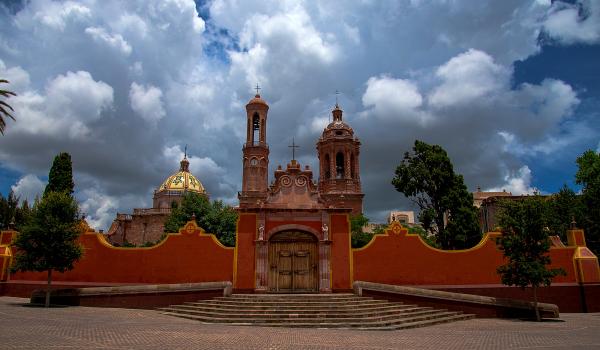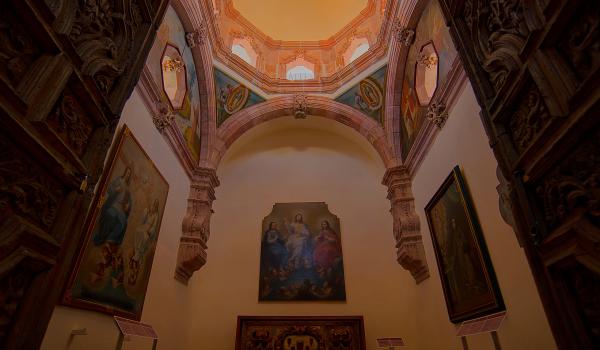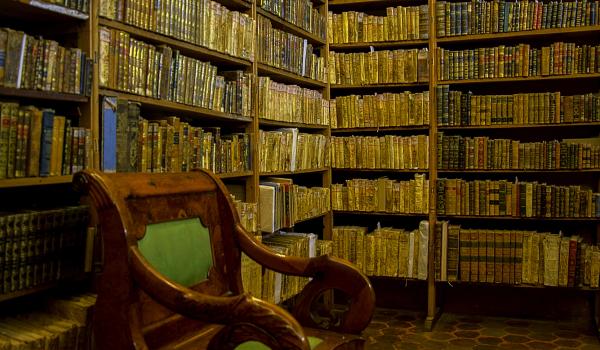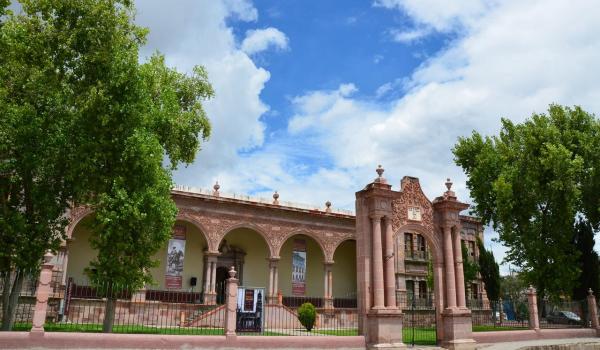Antiguo colegio de Nuestra Señora de Guadalupe de Propaganda Fide
Route element
Antiguo colegio de Nuestra Señora de Guadalupe de Propaganda Fide
The Franciscan order had a prolific presence in various parts of New Spain, particularly in what is now the state of Zacatecas. On January 12, 1707, Fray Antonio Margil de Jesús, along with ten other Franciscans, founded the College of Our Lady of Guadalupe de Propaganda Fide on the outskirts of Zacatecas. This institution interacted with its counterpart in Santa Cruz de Querétaro along the Camino Real de Tierra Adentro. Construction took place between 1713 and 1717, overseen by Father Guardian José Guerra.
From this College, many missionaries departed to evangelize the northern provinces of New Spain along the Camino Real de Tierra Adentro and its transversal branches.
The church has a large atrium, with the convent to the right, now converted into a museum of viceregal art. This building consists of two floors and has an enclosed inner cloister as protection against the strong winds of the region. Highlighted in this space is the presence of a cistern for collecting rainwater, in a city with scarce water resources.
The facade of the church has two levels, and the ornamentation of its columns resembles that found on the side entrances of the Cathedral of Durango and the San Antonio temple in Juana Guerra, in the Poanas Valley. On the sides, several figures are placed to reinforce the Guadalupan worship from its deepest Marian roots.
Between the columns, there are two niches containing the figures of the founding saints: Domingo de Guzmán, depicted with a dog holding a torch in its mouth symbolizing the fidelity of the Dominican Order against heresy, and Francisco de Asís, shown with a world at his feet and a skull in his hands.
The main altar features Neoclassical characteristics, with a central painting of the Virgin of Guadalupe attributed to Juan Correa. In one of the side altars stands the Virgin of Solitude, widely venerated in Zacatecas, and in the other, the Virgin of Refuge, whose image is particularly significant for the northern inhabitants of Mexico. The friars of the College of Guadalupe spread devotion to her along the Camino Real de Tierra Adentro in the late 18th century, making her one of the most popular figures in this vast territory. Within the core area of the site are two buildings, the Temple of Guadalupe and the College of Propaganda Fide, both in an acceptable state of preservation, with the latter now serving as a museum.
After the expulsion of the Jesuits, the Franciscan friars of Propaganda Fide were responsible for missionary work in the provinces of Texas and Louisiana in the United States, and they took charge of some of the missions there.


